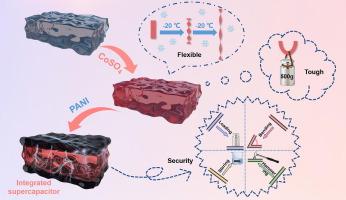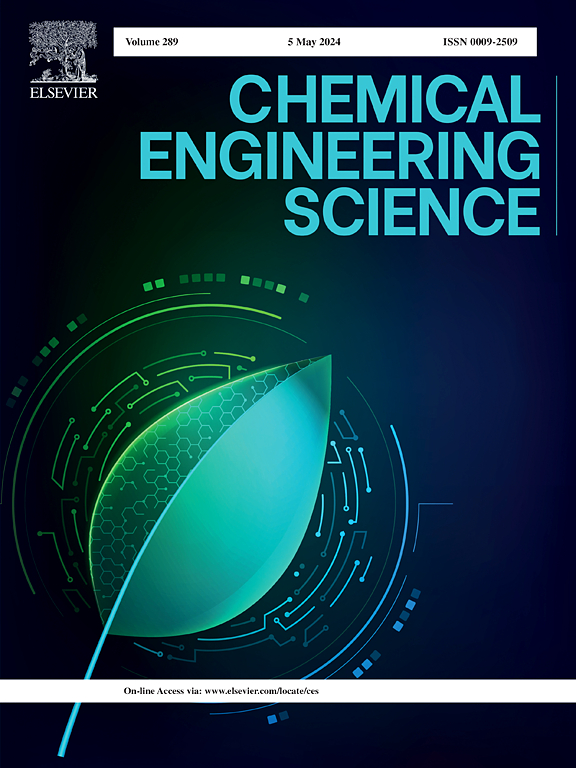Tough and safe integrated supercapacitor based on physically crosslinked double network gel polymer electrolyte with dual-role Co2+
IF 4.1
2区 工程技术
Q2 ENGINEERING, CHEMICAL
引用次数: 0
Abstract
To meet the demands of wearable electronics, flexible supercapacitors based on gel polymer electrolyte (GPE) have attracted significant interest. Herein, a physically cross-linked double network polyvinyl alcohol-sodium alginate-CoSO4 GPE was developed. The multivalence ion Co2+ was utilized as charge carrier for the first time, resulting in exceptional conductivity (3.7 S/m). On the other hand, Co2+ functioned as an ion crosslinker, constructing a double network structure, endowing the GPE with outstanding mechanical properties. Furtherly, polyaniline was in-situ synthesized on the GPE surface to fabricate an integrated supercapacitor. The integrated configuration provided a seamless electrode/electrolyte interface, significantly reducing interface resistance and improving specific capacitance (169 mF/cm2) and energy density (60 μWh/cm2). Notably, benefiting from this unique structure, the supercapacitor exhibited remarkable deformation adaptability and security without slippage and delamination among multilayers. This GPE and integrated supercapacitor offered a novel preparation strategy for wearable energy storage devices, demonstrating application potential in flexible electronics.


求助全文
约1分钟内获得全文
求助全文
来源期刊

Chemical Engineering Science
工程技术-工程:化工
CiteScore
7.50
自引率
8.50%
发文量
1025
审稿时长
50 days
期刊介绍:
Chemical engineering enables the transformation of natural resources and energy into useful products for society. It draws on and applies natural sciences, mathematics and economics, and has developed fundamental engineering science that underpins the discipline.
Chemical Engineering Science (CES) has been publishing papers on the fundamentals of chemical engineering since 1951. CES is the platform where the most significant advances in the discipline have ever since been published. Chemical Engineering Science has accompanied and sustained chemical engineering through its development into the vibrant and broad scientific discipline it is today.
 求助内容:
求助内容: 应助结果提醒方式:
应助结果提醒方式:


